The content of the article
Pearls are the only gems that are not mined from the bowels of the earth. If until today you thought that round pearl beads are "distant relatives" of diamonds and diamonds, then the time has come to find out the truth. They have nothing in common either in the composition or in the way of education.
What is a pearl
Pearls are a unique creation of nature, or rather mollusks, which live in shells. Separating a special substance, they create pearls inside their shelter, which the divers then extract.
But not every shell can be found pearls. The fact is that this stone is formed when foreign particles get into it: grains of sand, small mollusks, even air bubbles. All this can damage the oyster's tender body.Therefore, nature has rewarded the inhabitants of the shells with the unique ability to create a protective shell around the foreign bodies - pearls.
Layer by layer, the excreted liquid covers trapped particles, smoothing their sharp corners and roughness so that they cannot damage the mollusk. The larger the pearl, the longer it “ripens” inside. The substance that forms it is called mother of pearl, which means “mother of pearls”. It consists of 86 percent of calcium carbonate (aragonite), 12 percent of proteins (conchiolin) and 2 percent of water.
How do pearls appear
The formation of a pearl begins with the appearance of the first layer of aragonite around a foreign particle. Then on it hundreds more layers accrue. Proteins gradually fill the hollow space between the calcium carbonate crystals, making the shell very durable. The upper layer consists only of aragonite, which gives the pearl pearl luster.
Pearls can be formed in both sea and river shells. And it will be significantly different in composition and appearance. If in the depths of the sea large pearls are formed and not more than one in the shell, then in river waters, they are smaller and grow several pieces in one place.
These differences dictate the difference in price.Sea pearls are less commonly used to create jewelry and valued much higher. Also today, they learned how to create artificial pearls and grow them in greenhouse conditions.
What influences the appearance of pearls
Many factors influence the size, color and shape of pearls. As mentioned above, smaller stones are formed in rivers and other small bodies of water, and large stones at the bottom of the seas. If a pearl grows on the body of a mollusk without touching the walls, then the shape of the pearl will be as close as possible to the ball. Also, the formation may appear on the shell itself, then the pearl will look like a growth.
The smallest pearls reach a diameter of 0.2-0.25 cm; large ones are those that exceed 0.7-0.8 cm. Pearls are found 1 cm wide. And the largest find is kept in the Museum of London, it weighs as much as 85 grams. and has a girth of 4.5 cm.
In jewelry stores there are pearls of a wide variety of colors: white, pink, black, blue, red, burgundy, silver or gold. The most expensive is considered blue pearl, it is mined in the Indonesian depths. Dark is found in the Caribbean, pink in India and Japan, in Australia it will be white, and in Panama it will be golden.
Wild pearl
Only a small part of the pearl market is occupied by the natural product.It is hard to get, and fishing harms the ecology of sea and river depths. But still, lovers of treasure will not be lured to the side, although skillfully, but still grown in artificial conditions, pearls.
To find a standing copy, you have to open a multitude of shells, and only in one out of ten can you find an even stone of appropriate size that can be used in jewelry production.
But many fans of original jewelry consciously choose pearls of irregular shape. Its variety is striking. It can be not only oval, but also the most bizarre forms. Pearlescent shine at the same time on the bends plays amazing modulations. Rarely, but still you can find pearls drop-shaped, oblong, flat and completely irregular in shape. It looks very unusual stone, which if surrounded by rings.
Natural pearls of irregular shape have several varieties:
- Keshi It has a petal shape.
- Biwa. Looks like a mother of pearl wand.
- Baroque pearls. It is rather not a species, but a general definition for gems of bizarre shape.
Matte pearls look original, a similar anomaly is formed in the absence of pearl particles.These instances are worth fabulous sums, but not a single person on Earth will definitely have such an ornament.
Pearls that could tame
The desire of fashionistas to wear jewelry with pearls pushed jewelers to artificially growing a precious stone. For these purposes, foreign particles, most often polished pieces of the same pearls, are planted in the shells, and allowed to enter them into the reservoir with conditions ideal for incubation.
The cultivation of pearls began a few centuries ago in China. Until now, this country is considered a market leader along with Japan. During this long period, entrepreneurs have learned to display a large number of different varieties of this stone.
What kinds of cultured pearls exist:
- Akoya. This type of pearl is grown by oysters with the same name. Akoya is a sea pearl and is cultivated in Japan and China. Today it is the most popular variety, which is an example of a classic shape and color. Its size does not exceed 0.7-0.8 cm and it has an amazing refraction of light, which creates a feeling of glow from the inside.
- Golden pearl.Grown in the seas of Australia, Indonesia, in the Philippines and Myanmar. It differs significantly from the Oriental pearls: its diameter reaches 1 cm and has a dense upper layer of nacre, which makes the gloss shine.
- Black Pearl. The center of trade for this species is Tahiti, but production is available in many places. Black pearls are considered royal, they come in different sizes (from 0.8 to 1.8 cm) and are more expensive than others. The color scheme is amazing variety: from silver to black, with overflow of blue, purple or green.
- White pearls. It is grown in marine silver-lipped oysters on the shores of Australia, Indonesia and the Philippine Islands. Such pearls in diameter can reach 2 cm. Oysters of this species are very capricious and it is quite difficult to tame them, therefore these pearls are exclusive, despite the fact that they are cultivated.
Of course, we have listed not all varieties of this gem, but the most basic ones. Now you have an idea not only about how pearls are grown, but what kinds of pearls they are.
Imitation Pearls
Today, the jewelry market offers products for every taste and color, so the appearance of artificially created stones does not surprise anyone.A variety of technologies allows to produce products of the highest quality.
Popular varieties of cultured pearls:
- Majorca. The base is made of glass or plastic and covered with artificial mother of pearl. Thanks to a unique surface treatment method, pearls become incredibly similar to cultured ones.
- Taraka Unlike the previous method, the base of this pearl is made from real nacre, which is removed from the inner shell of the shells. From above, the stone is treated with polyamide and lacquer, which includes mica, plastic, titanium oxide and lead carbonate. This gives the pearl extra shine and protection.
- French pearls. This technology was one of the first and preserved to our times. A ball of glass from the inside is filled with wax and a piece resembling a pearl is obtained.
- Venetian pearls. The principle of production is similar to the previous one, with the only difference that pearl dust is added to the glass from which the sphere is blown.
Modern technologies make it possible to produce artificial pearls in a short time, which gives it an advantage over natural ones, which are grown on average for about 7 years.
How to choose and store products with pearls
After reviewing the varieties of real and artificial pearls, the question arises how not to get lost in such a variety and buy quality goods. Jewelers tips will help you in this difficult choice.
What are the criteria for choosing pearls:
- color indicates geographic origin;
- shine - the brighter it is, the more nacre;
- shape - its choice depends on your personal preferences, but the classic round is considered to be ideally round;
- smoothness - the less roughness, the more valuable the stone;
- size - the more, the more expensive.
If you have already purchased a product with pearls, it will be useful to learn how to properly store it, because the natural stone consists of organic compounds and is influenced by many factors.
Storage Rules:
- Avoid contact with water, chemicals and acids.
- clean with a soft, dry cloth;
- protect the surface of pearls from cosmetics, as they include fats and acids, corrosive nacre;
- Store the product in a box or box wrapped in cloth.
With poor care, pearls can last only 50 years, and with good care, 500.
Whatever product you choose - with artificial or natural stone, such beauty will delight for a long time. Pearls are a graceful and unusual stone that is not similar to other precious minerals. It gives the owner a royal and sophisticated look and makes her feminine and attractive. Deciding to opt for pearls, you will not lose with the purchase.
Video: growing artificial pearls

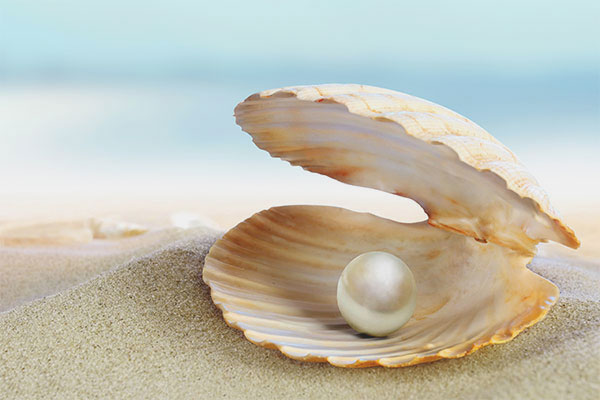
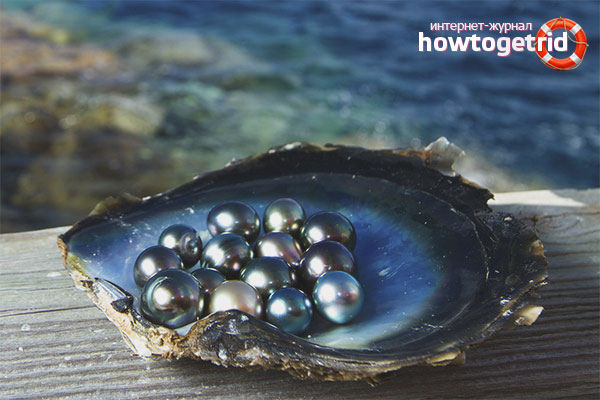
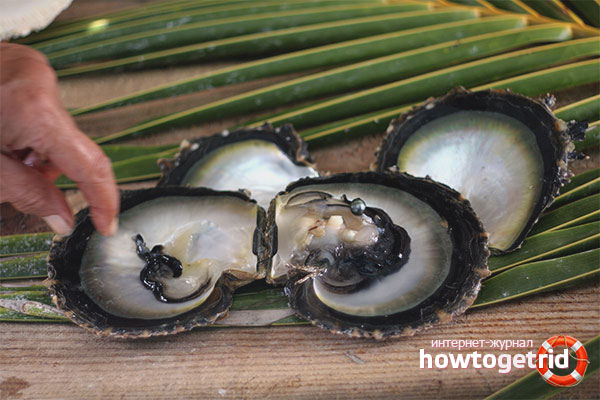
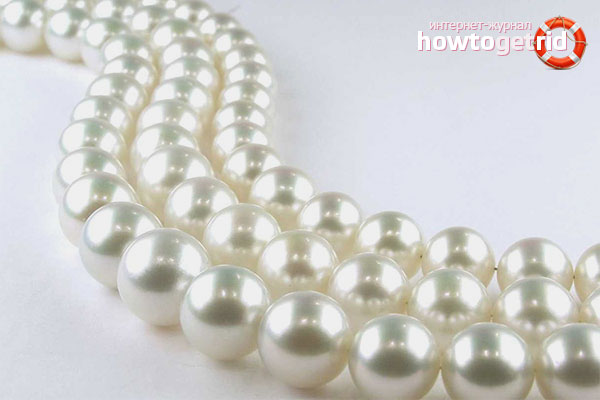
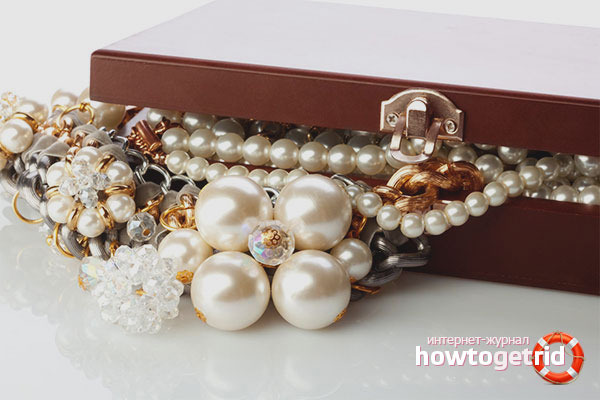

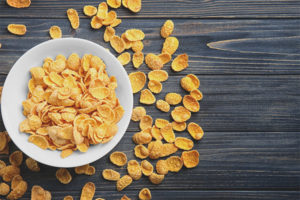
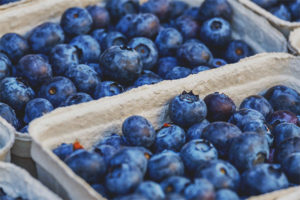
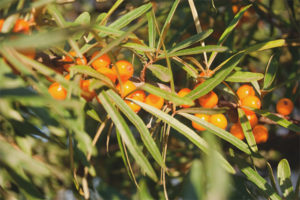





To send